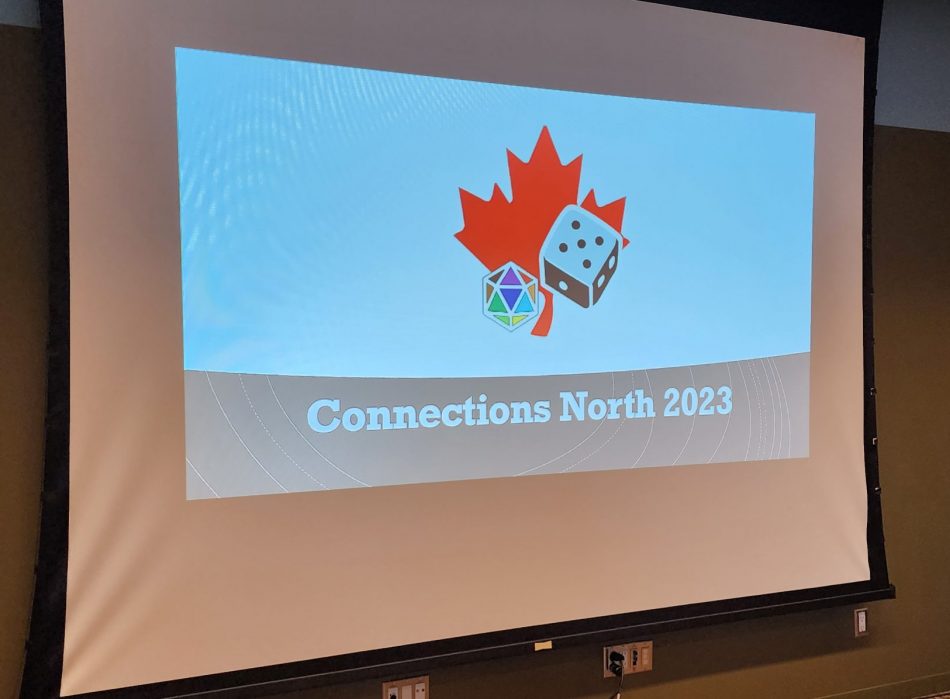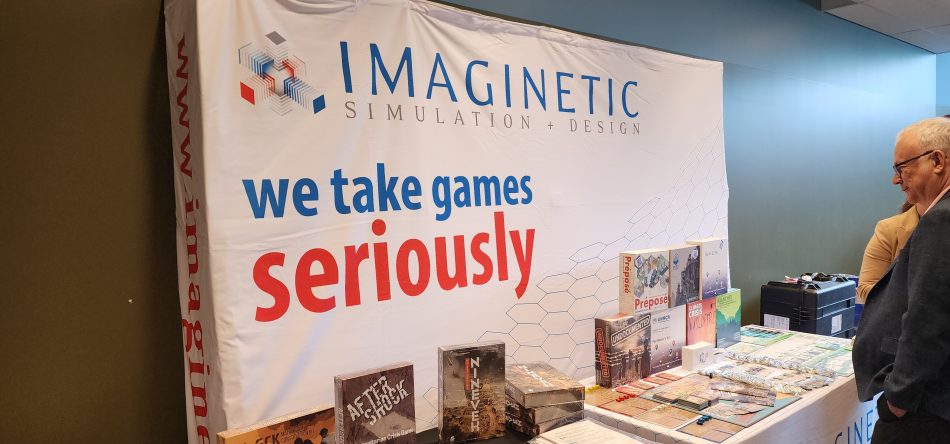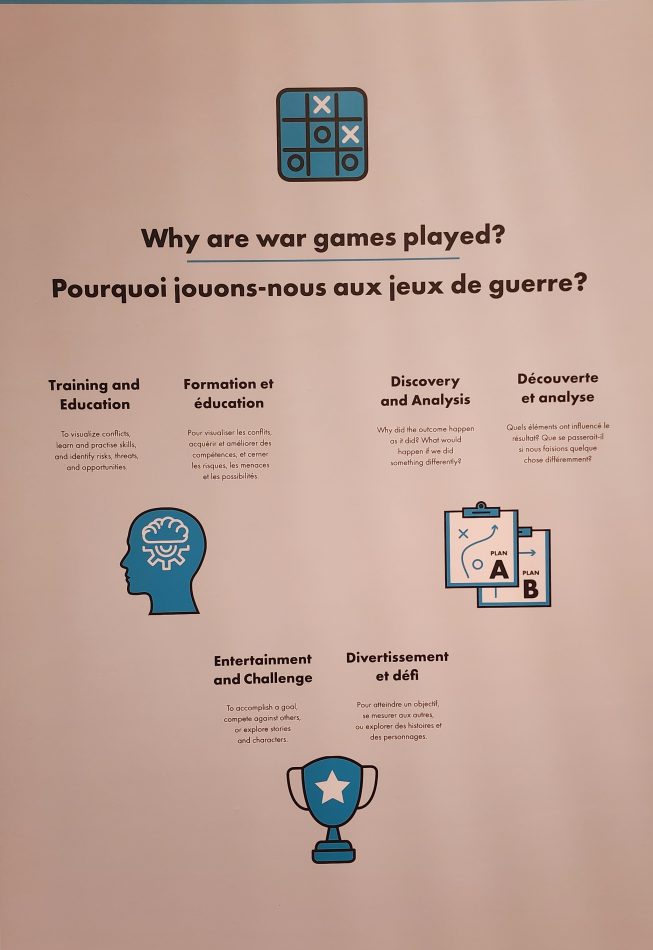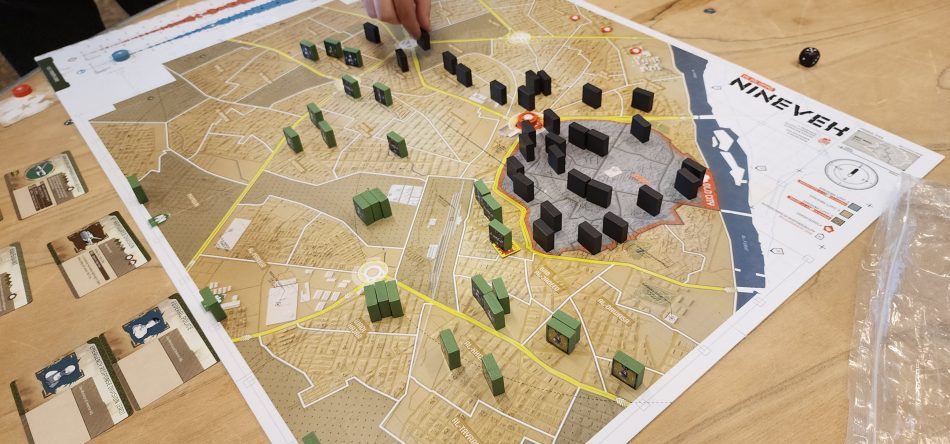Connections North – Serious Wargaming for the Canadian Government and beyond
By David Garvin
On the 9th of June, Paxsims hosted Connections North, a conference on professional wargaming. According to its website, it is “…a community of practice devoted to the professional use of wargames (and other serious games) for education, training, and policy analysis in Canada.” There were over 70 in attendance, ranging from military members, and civilian members of the defense community as well as many in various think tanks, government departments, and me. The conference was held at the impressive Canadian War Museum in Ottawa.

The conference was only one day, but the agenda was full. Over two dozen speakers were part of various panels, presenting topics from focused on National Defence, Policy Gaming, Ethical Challenges and finally building future scenarios from a Canadian perspective. I won’t relay the discussion points here in detail, but will instead discuss an aspect of the conference as well as to discuss a more philosophical aspect of the conference, and this is how gaming is gaining in importance in some circles in Canadian governmental departments.

The one aspect concerns a novel portion of the event that I initially balked at. But I’m quite glad that I didn’t. It involved a bit of homework for the attendees, and that was to take one of three problems presented on a sheet of paper and then, with a randomly selected group, come up with a solution to the presented problem. My problem? Develop a Civilian Harm Mitigation Toolkit. I won’t get into the solution my team developed, but it was a remarkable solution developed in under an hour. Of course, I have a bias in judging the effort my team put in, but I’ll allow it!

Concurrent with the conference was the opening of a new exhibit at the museum: Wargames! Registration at the conference allowed free entry into the museum, which does of course include its impressive collection of tanks (and a CF-101 Voodoo) in its LeBreton gallery. The tanks could take up several hours, going through the various iterations of Leopard 1 tanks Canada used over the years, to an assortment of German and other tanks.

The gallery exhibit on Wargames was quite impressive. The games ranged from those used by militaries to the more commonly known commercial games. Also included was “Wir fahren gegen Engeland”, advertised as “a new war game with U Boats and Fighters”. This game was produced in Germany in 1940 and included such things as cards of various ships, with tonnage. Players were encouraged to note the date of the sinking of the ships as they happened in the war. One card on the display noted that a certain ship had been sunk by Prien.

It was partially sad for me to see so many games on display that I could not touch, but also satisfying to see that my hobby of several decades warrants a serious look by a serious museum. Not only did the museum have games on display, but there was plenty of information displayed as well, meant to do what museums do best: educate. Judging by the sizes of the crowds going through on a Friday afternoon, there was plenty of opportunity for education to take place, as well! The best, single display board to educate the visitor: Why do people play wargames?

There are obvious military applications for wargames and this was not lost in the exhibit. Many examples were given, including a Canadian game from around 1980 called “Contact!” This game was developed by the Combat Training Centre in Gagetown, New Brunswick, and its aim was to help junior officers develop their skills in tactical doctrine against those of the Soviet Union. Its purpose was therefore two-fold: one, to gain interest in having a viable, fun game, and second, to develop the level of professional competence in junior army officers.

At the end of the conference, I felt confident that not only the Canadian Military, but the Canadian Government at large, was starting to take gaming seriously. As stated by a fellow attendee, gaming allows for innovation and is safe to fail. One must seek to push the envelope in a safe environment in order to improve one’s craft, and that is exactly the final point I wish to make. Paxsims is committed to the Derby House Principles, which demand inclusion and seek to foster an environment where everyone’s voice is included.
And I saw that in action in my workshop in developing our solution to the Ethical problem game. My group of six had two “professionals” and four “amateurs”. We represented young and old, men and women. Suffice it to say that we were able to develop an innovative and novel solution to our problem only because of everyone’s input. And Brittany presented our “elevator speech” in about 90 seconds, much to the surprise of all who were present. (We had three minutes, and many groups struggled to remain within this limit) So, diversity and inclusion aren’t buzzwords, it is imperative. So, just as we push the envelope when we play games, we must continue to do so as we develop games and professionalize our hobby.
David Garvin is a Canadian Army Officer stationed in Nova Scotia and actively seeks to professionalize his hobby – for the Greater Good.

Thanks for posting this David.
Pity I only read it today (22 June), and missed the opportunity to participate.
I was able, however, to attend a presentation given by the man behind the exhibit, CWM historian and exhibit curator Dr. Andrew Burtch. Helen and I also had a brief look at the exhibit on Wargaming today. We’ll be returning soon to spend more time in Zones 3-5. While I found the Unterseeboot game fascinating, it was the War Game box loaned from the UK that was, IMO, the star of the show. Would love to have a copy of that in my office. Amazing artifact!
I briefly spoke with Dr. Burtch about the exhibit. I asked him what his research for the show revealed about the current state of “manual” wargaming in the CF. Apart from local initiatives by brigades or schools, there doesn’t appear to be an Army, let alone, a Forces-wide interest at present. Are you aware of any efforts afoot to revisit physical wargames such as Contact?
As an aside, when I queried Dr. Burtch further regarding professional wargaming in Canada, he recommended that I look into Paxsims. And that is how I found your post!
Sadly, there was a die missing from the historical dice collection at the beginning of the exhibit, a die sporting a Canadian soldier with a fixed bayonet and Tommy tin hat. After all, one goal of the exhibit was 40 percent Canadian content. 😉
Cheers,
Chris